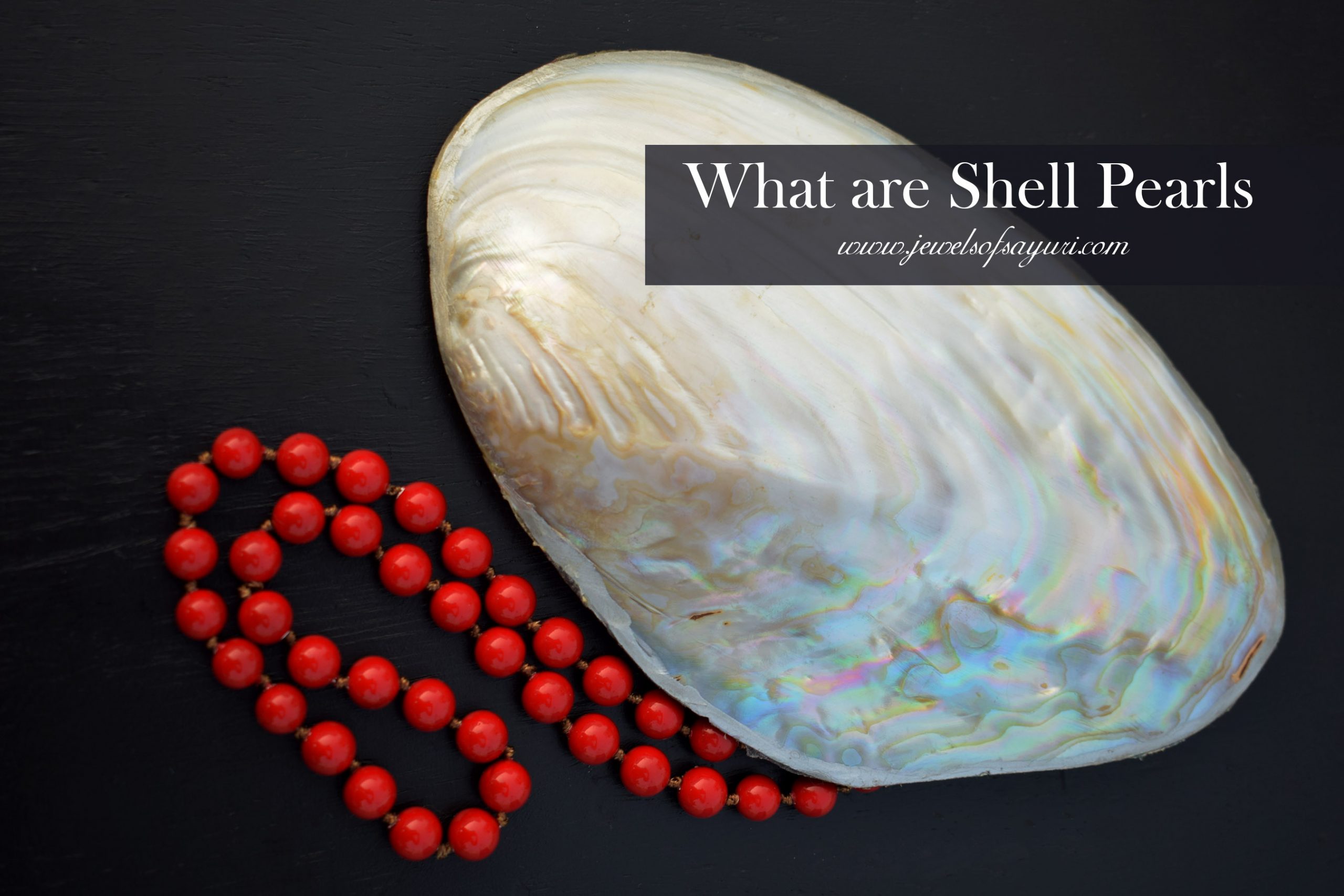Through the ages the pearl has been known as the gem of purity and love. The lustrous glow of the pearl imparts an aura of mystery and romance. Indian history describes how pearls were important everyday jewellery for the royalty and a gift of pearls was the highest honour somebody could get. In my post on types of pearls, I list the various categories of pearls. In this post I will elaborate on imitation pearls, particularly Shell pearls.
Natural, Cultured and imitation pearls
Just to put things in context, there are three categories of pearls. They are natural, cultured and imitation pearls and not real and fake pearls. Natural pearls are those produced in nature without any human intervention. To culture a pearl is to create a pearl using live mollusks with human intervention. A pearl is a gemstone that cannot be produced by human alone. It needs the body of a living creature to be created.
Any bead that is not a natural or cultured pearl but looks like one is an imitation pearl. It is created by coating plastic, acrylic, or fibre beads with a pearlised substance. Alternatively, MOP or nacreous shell powder can be used to create MOP pearls or Shell pearls.

What are shell pearls
Shell Pearls are imitation pearls created using the shells of pearl producing mollusks. Shell Pearls are made from the inner lining of the shells, known as Mother-of-pearl (MOP). I have seen two varieties labelled as shell beads/pearls in the market. One varieties includes coins, discs, and components cut from mollusks shells. In the other variety, the lining is ground to a fine powder, shaped, dyed and coated with natural pearl nacre and then a protective coating to give it lustre, according to Lansing. Shells pearls are an economical alternative to cultured pearls and come in a wide variety of colours. Hence they are commonly used for in costume jewellery. You can see the pearl nacre on the top of the shell here.
If you want to know more about the Ohrid pearls that Maya mentions in the comment, check out this link.

How to identify shell pearls
Dark coloured pearls, both natural and cultured exhibit “orient” (iridescent colour). In shell pearls, an artificial glittery coating (essence d orient) is applied to replicate this effect, says a GIA report. More so, imitations that do not contain natural Nacre or MOP are also sometimes mis-labelled as shell pearls or pearls and sold. Buyers beware.
The best way to test is by ‘lightly’ rubbing the pearls on the upper edge of your upper front teeth. Or you can lightly rub one against the other. If they feel gritty or sandy, they are real pearls. If they feel smooth, they are probably imitations.

Pearl Jewellery Trend – AW2020
The current, pearl jewellery trend as spotted by WGSN is the use of colour in pearls. This may be in the form of naturally coloured cultured pearls, dyed pearls or imitations. In addition to that, colour is introduced through the threading material as seen in Moschino AW/2020-21. Recently, I made a shell pearl and Murano pearl bead necklace for my mom as a birthday gift. I used pink cotton thread to knot it as a nod to the trend. While it was specifically made for the Chiffon saree in the picture, it looked with a pink cotton saree due to the colour accent.

Shell pearl necklaces
All the three necklaces shown in this post are shell pearl necklaces hand knotted by me. It started with me doing a knotting demo for my students which really got me interested in trying out different threads and techniques. The red used double strand nylon (leather sewing thread) while the dark gray is single strand nylon. I have used polyester previously for knotting and recommend nylon over polyester even if it is harder to get in India. I wish pearl knotting silk was available in India. For those who wish to use shell pearls without knotting them, I have several pearl jewellery tutorials on the blog.
I hope that you find it interesting
Cheers




What do you think?